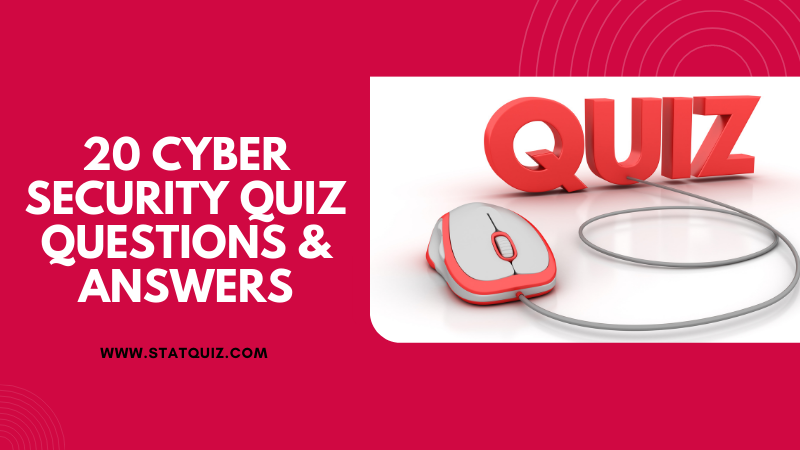Cyber security is one of the fastest growing and most important fields of IT today. Cybercriminals are taking advantage of the lack of knowledge of the average computer user, which is why there is a pressing need for proper training. However, cyber security is a topic that should be on the minds of every computer owner and user. This blog will cover 20 of the most commonly asked cyber security quiz questions and answers, to help educate potential cyber security workers on the most basic aspects of cyber security.
Let’s get started with the most asked cyber security quiz questions with appropriate answers.
The four lines of defense against DDoS attacks are: attack prevention and preemption, attack detection and filtering, attack source traceback and identification and ………..
Fill the blank with an appropriate answer
A …….. is an action that prevents or impairs the authorized use of networks, systems, or applications by exhausting resources such as central processing units, memory, bandwidth, and disk space.
Fill the blank with an appropriate answer
_ bandwidth attacks attempt to take advantage of the disproportionally large resource consumption at a server.
Select one:
a. Application-based
b. System-based
c. Random
d. Amplification
_ is a text-based protocol with a syntax similar to that of HTTP.
Select one:
a. RIP
b. DIP
c. SIP
d. HIP
Given sufficiently privileged access to the network handling code on a computer system, it is difficult to create packets with a forged source address.
Select one:
True
False
The standard protocol used for call setup in VoIP is the …….. Protocol.
Fill the blank with an appropriate answer
Reflector and amplifier attacks use compromised systems running the attacker’s programs.
Select one:
True
False
The best defense against being an unwitting participant in a DDoS attack is to prevent your systems from being compromised.
Select one:
True
False
Bots starting from a given HTTP link and then following all links on the provided Web site in a recursive way is called _.
Select one:
a. trailing
b. spidering
c. spoofing
d. crowding
A denial-of-service attack is an attempt to compromise availability by hindering or blocking completely the provision of some service.
Select one:
True
False
A cyberslam is an application attack that consumes significant resources, limiting the server’s ability to respond to valid requests from other users.
Select one:
True
False
__ attempts to monopolize all of the available request handling threads on the Web server by sending HTTP requests that never complete.
Select one:
a. HTTP
b. Reflection attacks
c. SYN flooding
d. Slowloris
The best defense against broadcast amplification attacks is to block the use of …….. broadcasts.
Fill the blank with an appropriate answer
Using forged source addresses is known as _.
Select one:
a. source address spoofing
b. a three-way address
c. random dropping
d. directed broadcast
A SIP flood attack exploits the fact that a single INVITE request triggers considerable resource consumption.
Select one:
True
False
DoS attacks cause damage or destruction of IT infrastructures.
Select one:
True
False
In reflection attacks, the ………….. address directs all the packets at the desired target and any responses to the intermediary.
Fill the blank with an appropriate answer
If an organization is dependent on network services it should consider mirroring and ……… these servers over multiple sites with multiple network connections.
Fill the blank with an appropriate answer
Since filtering needs to be done as close to the source as possible by routers or gateways knowing the valid address ranges of incoming packets, an ……. is best placed to ensure that valid source addresses are used in all packets from its
customers.
Fill the blank with an appropriate answer
In both direct flooding attacks and __ the use of spoofed source addresses results in response packets being scattered across the Internet and thus detectable.
Select one:
a. SYN spoofing attacks
b. indirect flooding attacks
c. ICMP attacks
d. system address spoofing
Answers
- attack reactio
- denial of se
- a
- c
- False
- Session Initiati
- False
- True
- b
- True
- True
- d
- IP-directed
- a
- True
- False
- spoofed sou
- replicating
- ISP
- a

